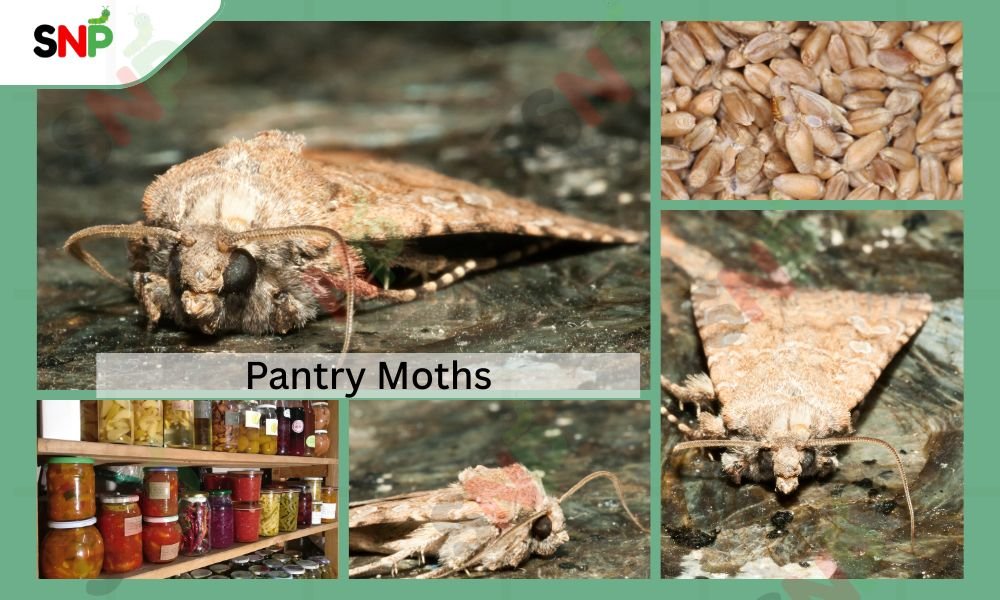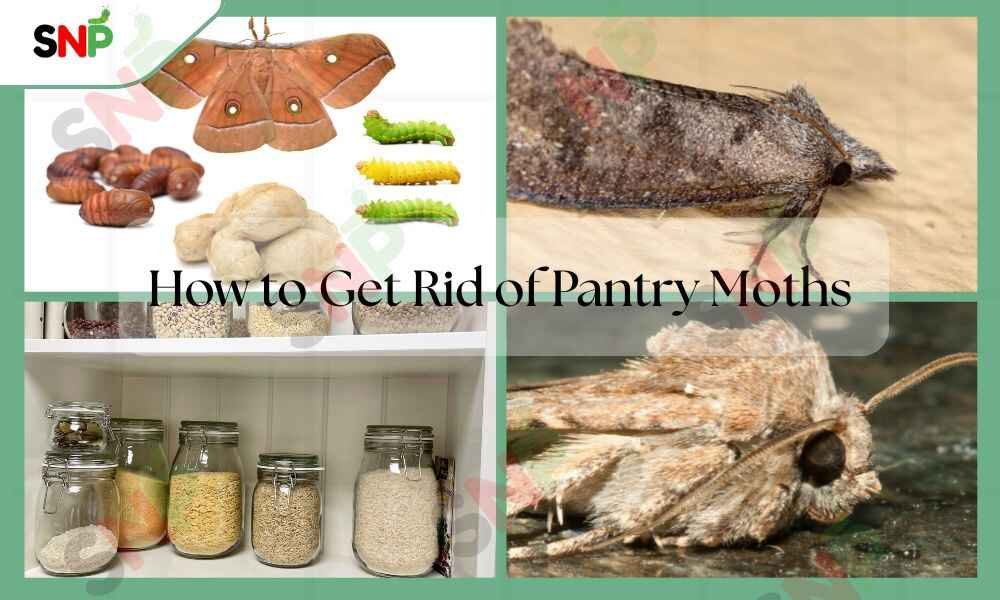Pantry Moths: A Complete Guide for American Homeowners

Pantry moths are one of the commonest and most annoying household pests that American families can find in their kitchens. These small and tiresome bugs can easily and rapidly turn a well-stocked pantry into a disaster for themselves. They will not only contaminate the food but will also make an unwelcome mess in it. Learning the nature of these pests is the most important thing to be able to prevent and control them during the whole process of solving the problem, which makes the present guide an indispensable aid to every homeowner who is dealing with the problem of pantry moths.
What are Pantry Moths?
Pantry moths are little creatures that love grain and thus only dry food they can find in the kitchen and the pantry. They are a night kind of animals and, besides that, they are not one but many species that are quite similar and have a similar kind of food and thus feeding habits. The common types of pantry moths that are found in an American household are the Indian Meal Moth, Mediterranean Flour Moth, and Angoumois Grain Moth.

The insects called pantry moths that are in their adult stage are very small. The most recognizable by people, the Indian Meal Moth, looks like it has a pair of bronze-colored wings, but if you look closely, two colors can be seen – the one which is next to the head of the moth is grayish-white, and the far end is the reddish-brown copper color. Unlike butterflies, these moths are quite small and have a weak flying ability, so they tend to rest with their wings folded, and when they are disturbed, they show the flight pattern which is very characteristic of them – they fly in a zigzag maneuver.
Pantry moths have launched an attack on stored food products that are of an extensive variety, such as cereals, grains, flour, beans, nuts, dried fruits, spices, chocolate, pet food, birdseed, and even packaging materials. These pests are quite troublesome, mainly because they tend to invade food packaging – their larvae can make holes in plastic bags, thin cardboard, and even in some sealed containers to get at the food. The harm caused by pantry moths has gone far beyond food consumption, only because they have now become a nuisance in several products due to their droppings, shed skins, silk webbing, and body parts that have led to the whole food supplies being rendered unusable.
Pantry Moth Larvae: The Real Culprits
The most life-threatening phase of the pantry moth life cycle is the larval stage. The pantry moth larvae are tiny, worm-like creatures, usually off-white with brown heads, that can reach a length of 1.7 cm. Once they hatch from eggs laid directly on food, these little ones become ravenous and consume whatever is at hand – flour, grains, nuts, and more.
During their eating, pantry moth larvae give off frass (waste) and the silky webbing, which acts as a glue for the particles of the food, thus indicating a very big infestation along with the smell of them. Not only will their presence will destroy the food, but also their rapid spread, as they can chew not only cardboard, but also thin plastic to get to new food sources, will cause the spreading of the infestation.
The larva stage of their development may continue from a minimum of 2-3 weeks, if the temperature is high, to even a few months, if the environment is cold and the food is insufficient. It is this time that they do the most contamination and, therefore, they are the main cause of food being thrown away.
Pantry Moth Life Cycle
Understanding the pantry moth lifecycle is very important to remove them outside your house because you never know which corner they are building their family in. They go through a complete process of four stages.
- Egg Stage: One female Pantry Moth can give a maximum of four hundred eggs, directly or near a food source. These eggs are so small that they look like a white, grey haze.
- Larval Stage: This is the most damaging phase. The pantry moth larvae consume food for up to 3 weeks (sometimes even longer) and thus spread the pollution everywhere they go.
- Pupal Stage: When the larvae have eaten enough, they move away from the food and spin their cocoons in the cracks, corners, or even under the food packaging. The pupa period is the time when the insect changes inside the cocoon from being a larva into an adult moth, which lasts about 15-20 days.
- Adult Stage: Adult Pantry Moths come out mainly to mate and lay eggs, their life span being about 1-2 weeks. They don’t eat during this period; the only thing they do is reproduce.
The entire pantry moth life cycle may last from 30 to 300 days, depending on the environmental conditions. This will then allow the population to grow rapidly if it is not under the control of humans.

How to Get Rid of Pantry Moths
If you understand that we’re having a problem with an infestation of these pests, here’s a quick guide on the way to how to get rid of pantry moths:
- Check every container or item in your pantry for the presence of moths, larvae, webs, or anything sticking together.
- Throw away all the infest food as soon as possible and ensure that they are zip in bags before throwing them away.
- Washing shelves and corners of the pantry, plus containers with hot soapy water or a vinegar solution, is to done.
- All your dry goods should be store in glass, plastic, or metal after being well clean in air-tight containers. This will guard against re-infestation of your pantry.
- You will also be able to break the cycle of breeding by applying the pheromone traps to trap the adult moths.
- Start checking your pantry more often and rotating the food; this way, you will notice a problem quite early.
- Seal any cracks or entry points in your pantry, so they will not attract new moths.
Conclusion
Pantry Moths are continually annoying for American households; however, this issue is not unsolvable. Once you get a clear understanding of the pantry moth life cycle as well as their destructive behavior of the pantry moth larvae, you will be able to protect not only your food but also your family. Implementing the correct pollution and prevention measures will become a guarantee that your pantry will be free of pests and food will be safe for use.
For more experts’ tips and tricks on how to find effective solutions to get rid of pantry moths, head to SayNoPest, your most reliable source of pest control across the United States.
Related Posts
Clothes Moths: How to Protect Your Wardrobe
The clothes moths are a secret danger that is hiding in your storage spaces and in your closets all over America. Homeowners can be concerned with them because of their ability to destroy favourite clothes, particularly those made in natural fibres. Did you ever ask yourself the question: Do moths eat clothes? Or do you […]
Do Moths Eat Clothes? Uncovering the Truth About Clothing Moth
Do moths eat clothes? Well, if you have ever found holes in your favorite wool sweater after taking it out of storage, you must have asked yourself that question. It is one of the questions that are often asked by households in the United States who love wool, silk, and other natural fabrics. First of […]
Quick Link
Services
